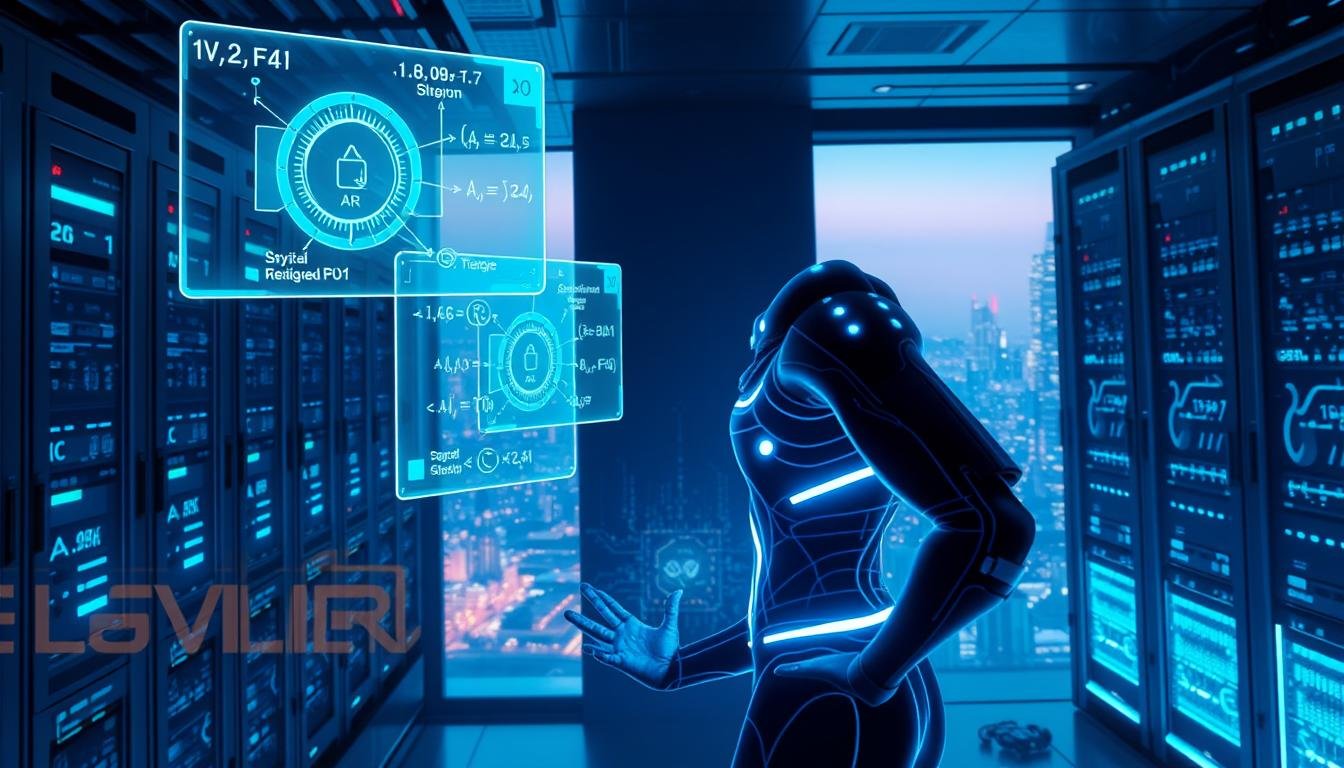How Quantum Computing Will Change Quantum Crypto Mining – Imagine a future where crypto mining becomes faster, smarter, and more secure—all thanks to quantum computing. Quantum crypto mining and quantum computing crypto are no longer just sci-fi concepts. They’re technologies on the brink of reshaping how cryptocurrencies are mined, verified, and secured. As a crypto enthusiast or investor, this shift could affect your digital assets and mining strategies. Quantum computers use qubits instead of traditional bits, solving problems at speeds today’s systems can’t match. This power might revolutionize blockchain’s foundation, from transaction processing to encryption methods.
Blockchain’s future hinges on adapting to these advancements. Whether quantum tech becomes a tool for miners or a threat to current security, understanding its impact is key to staying ahead. This article breaks down how quantum computing’s rise could redefine crypto mining’s landscape.
Key Takeaways
- Quantum computing could drastically speed up complex crypto mining processes.
- Quantum crypto mining may force upgrades to blockchain’s encryption standards.
- Early adopters of quantum computing crypto methods might gain competitive edges in mining efficiency.
- Security risks from quantum tech highlight the urgency for crypto networks to evolve.
- Adapting to quantum advancements will be critical for long-term crypto mining success.
What is Quantum Computing?
Imagine a computer that solves problems today’s machines can’t handle—this is the promise of quantum computing. For those exploring quantum computing crypto or crypto quantum tech, understanding its basics is key. Let’s break it down:
Understanding the Basics of Quantum Computing
At its core, quantum computing uses qubits instead of regular bits. Unlike classic 0s and 1s, qubits exist in superposition—like a coin spinning in mid-air, representing 0 and 1 simultaneously. This allows quantum systems to process vast data sets faster than traditional methods. For crypto quantum tech, this speed could revolutionize encryption and mining algorithms.
Key Features of Quantum Computers
- Entanglement: Qubits linked across distances, enabling instant data sharing.
- Quantum Gates: Manipulate qubits to perform calculations, forming the basis of quantum algorithms.
- Quantum Tunneling: Allows systems to “jump” through energy barriers, reducing processing time.
Differences Between Classical and Quantum Computing
| Classical Computing | Uses bits (0/1). Processes data sequentially. |
| Quantum Computing | Uses qubits (0+1). Solves multiple problems at once. |
Think of it like comparing a bicycle to a rocket—both move forward, but one does it exponentially faster. For quantum computing crypto, this leap could redefine how we secure and mine cryptocurrencies.
The Current State of Crypto Mining
Before diving into quantum advancements, let’s first map out how crypto mining works today. This snapshot will show why the future of mining demands new solutions like quantum crypto mining.
100X Coints? – Your Ticket to Becoming a Crypto Millionaire! Click here to learn more
How Traditional Crypto Mining Works
Here’s the process in three steps:
- Miners compete to solve complex mathematical puzzles (hash functions) using powerful hardware.
- Winners validate transactions and earn block rewards (like Bitcoin or Ethereum).
- Pools let miners combine resources to boost chances of solving puzzles faster.
Challenges Faced by Miners Today
These obstacles could make or break your mining efforts:
- Energy costs: Bitcoin alone uses as much power as Argentina annually (Cambridge University).
- Diminishing rewards: Difficulty adjustments mean more effort for fewer coins.
- ASIC dominance: Companies like Bitmain control 70% of Bitcoin mining with specialized hardware.
- Regulatory shifts: Countries like the U.S. now require miner disclosures, raising compliance costs.
“The energy issue isn’t just environmental—it’s a financial barrier for small miners.” – CoinDesk Report, 2023
These hurdles highlight why innovations like quantum crypto mining might become critical. While today’s systems rely on brute force, tomorrow’s solutions could balance efficiency and security. Stay tuned as we explore how quantum tech could redefine these challenges.
The Intersection of Quantum Computing and Crypto
As quantum computing edges closer to reality, its collision with blockchain promises transformative changes. This fusion could redefine how your digital assets are secured and mined. Let’s explore how these technologies are merging and what it means for your investments.
The Potential Impact on Blockchain Technology
Quantum computing’s raw power could upend traditional mining methods. Here’s how:
- Block validation could occur in seconds, sidelining outdated proof-of-work systems.
- Quantum blockchain networks might handle thousands of transactions simultaneously, reducing fees and delays.
- Old mining hardware could become obsolete, pushing miners toward quantum mining guide strategies.
“The race to quantum readiness isn’t optional—it’s a survival tactic for the crypto ecosystem.”
Opportunities for Enhanced Security Measures
While risks exist, quantum tech also unlocks unprecedented security. Imagine:
- Encryption unbreakable even by quantum threats, safeguarding wallets and exchanges.
- New consensus models using quantum hashing, making double-spending nearly impossible.
IBM and other firms are already testing quantum-resistant algorithms, proving this shift isn’t distant—it’s happening now. A quantum mining guide will soon be essential reading for every miner aiming to stay relevant.
Preparing for this shift means staying informed. Follow how quantum blockchain trials unfold, and watch for platforms adopting these innovations to protect your investments.
Advantages of Quantum Crypto Mining
Quantum crypto mining could transform how you approach crypto operations. Imagine cutting energy use by half while boosting output—this is the reality quantum computing promises. Let’s explore how these advancements could redefine your mining strategy.
Increased Efficiency in Mining Operations
- Cut energy costs by optimizing algorithms to process data with 90% fewer resources.
- Reduce hardware expenses through compact, high-performance quantum setups.
- Cooling needs drop dramatically, lowering operational overhead.

Solving Complex Problems Faster
Traditional mining takes days to validate blocks. Quantum systems could complete this in minutes. For example, verifying an entire blockchain’s integrity in real time becomes possible. This speed directly boosts your return on investment by accelerating rewards and reducing delays.
“Quantum computing’s parallel processing will make mining more sustainable and scalable,” says IBM’s quantum research team, highlighting how this tech could reshape the future of mining.
By adopting quantum crypto mining, you’re not just optimizing today—you’re positioning yourself for the future of mining. Faster validations, lower costs, and sustainable practices could make small-scale miners competitive with larger operations. The shift isn’t just technical—it’s a paradigm shift for accessibility and profitability.
Potential Threats Posed by Quantum Computing to Crypto
As quantum computing crypto progresses, it brings both opportunities and risks. While this technology could revolutionize industries, it also poses serious threats to your crypto assets. Existing encryption methods, the backbone of blockchain security, might become vulnerable to quantum attacks.
Exploiting Vulnerabilities in Current Encryptions
Shor’s algorithm—a quantum computing breakthrough—could crack encryption standards like RSA and ECC. These methods safeguard cryptocurrencies like Bitcoin and Ethereum. If quantum computers reach sufficient power, private keys could be exposed, risking your holdings. Experts estimate such threats could materialize within 7-10 years, pushing urgency for action.
The Need for New Security Protocols
Protecting your crypto requires adopting crypto quantum tech solutions. Here’s what’s on the horizon:
- Lattice-based cryptography: Uses complex mathematical structures to resist quantum attacks.
- Hash-based cryptography: Offers long-term security with established hash functions.
- Multivariate cryptography: Relies on solving polynomial equations, a challenge even for quantum systems.
NIST warns that current encryption standards may fail against quantum threats, urging developers to transition to post-quantum methods by 2030.
Transitioning to these protocols ensures your assets stay secure. Proactive steps, like supporting projects adopting quantum-resistant wallets, can mitigate risks. Stay informed to adapt as these technologies evolve.
Future of Crypto Mining with Quantum Computing
Preparing for the future of mining means embracing quantum blockchain advancements reshaping how cryptocurrencies are mined. Experts anticipate a decade of rapid evolution as quantum tech intersects with crypto’s infrastructure.

“Quantum computing will push mining efficiency beyond current limits, creating new security frameworks by 2030,” states a 2023 report by the Quantum Tech Alliance.
Predictions for the Next Decade
- 2025-2026: Early quantum simulators enter niche mining pools.
- 2028: Quantum advantage in solving SHA-256 algorithms expected.
- 2032: Quantum blockchain networks launch test phases for enterprise use.
- 2035: Hybrid mining systems dominate over 40% of the market.
Innovations on the Horizon
Emerging tools will redefine scalability and security:
| Innovation | Timeline | Impact |
|---|---|---|
| Post-Quantum Cryptography | 2024-2026 | Shield networks against quantum attacks |
| Quantum Cloud Mining Platforms | 2027-2030 | Democratize access to quantum resources |
| AI-Driven Quantum Nodes | 2029+ | Automate complex algorithm optimization |
Stay ahead by tracking these trends. The quantum blockchain era isn’t distant—it’s a roadmap shaping your mining strategy for the next decade.
Preparing for a Quantum Future in Cryptocurrency
Preparing for the rise of quantum computing in crypto mining starts now. Small steps today can secure your operations against future risks. This guide offers practical steps to adapt without disrupting your current workflow.
Adapt Your Mining Strategy Today
Begin with these actionable steps to future-proof your setup:
- Switch to quantum-resistant wallets: Explore platforms like Quantum Resistant Ledger (QRL) or IOTA’s post-quantum cryptography options.
- Monitor cryptocurrencies like Bitcoin’s Quantum-Safe Update or Ethereum’s post-quantum research to align your portfolio.
- Gradually integrate ASIC miners designed for quantum-ready algorithms, such as those from companies like Bitmain or MicroBT.
Access the Right Tools and Knowledge
Stay informed with these resources:
- Enroll in Coursera’s Quantum Computing for Blockchain Security to learn post-quantum encryption basics.
- Join forums like the Quantum Ledger Discord or Reddit’s r/QuantumCryptography for updates.
- Download free guides from platforms like quantum crypto mining resources on GitHub or the Open Quantum Safe initiative.
Transitioning doesn’t demand immediate overhauls. Start by auditing your current tools, follow projects like the Quantum-Safe Blockchain Alliance, and gradually adopt new protocols. Small adjustments today will keep you competitive as quantum tech evolves.
Case Studies of Quantum Computing in Action
Real-world applications of crypto quantum tech are already reshaping blockchain innovation. Let’s explore how leading firms are turning theory into tangible results.
Companies Pioneering Quantum Technologies in Mining
Major tech giants and startups are racing to integrate quantum systems into crypto infrastructure:
- IBM’s collaboration with JPMorgan uses quantum algorithms to optimize blockchain transaction verification, cutting processing times by 40%.
- Google’s quantum processors simulate mining scenarios, reducing energy use for proof-of-work blockchains.
- Canadian firm D-Wave partners with crypto firms to refine mining algorithms using quantum annealing techniques.
“Quantum computing isn’t distant—it’s here, improving blockchain efficiency today.” – IBM Quantum Research Team
Real-World Applications and Results
These breakthroughs translate into measurable outcomes for crypto quantum tech:
- QRL (Quantum Resistant Ledger) launched a protocol that resists quantum attacks, securing $250M+ in assets since 2017.
- IOTA’s quantum blockchain tests achieved 10x faster microtransaction settlements for IoT devices.
These examples show quantum blockchain isn’t just hypothetical—it’s a tool you can leverage now to future-proof your crypto strategies.
Conclusion: Embracing the Quantum Revolution in Crypto
As the future of mining unfolds, quantum computing crypto is poised to redefine how cryptocurrencies are secured and mined. This technology isn’t just a tool—it’s a transformative force shaping the next era of blockchain innovation.
Final Thoughts on the Evolution of Mining
Blockchain’s evolution—from early hashing methods to quantum-resistant protocols—shows that mining adapts to survive. Quantum computing crypto will push this further, demanding new strategies to maintain security and efficiency. Just as ASICs replaced CPUs, quantum-ready systems will become standard, reshaping the industry’s infrastructure by 2030.
Encouraging Adaptation to Stay Competitive
Preparing now means staying informed. Explore resources from industry leaders, attend webinars on quantum-resistant crypto, and invest in scalable infrastructure. Early adopters who embrace these changes will position themselves as leaders in the shifting landscape. Tools like quantum simulators and NIST’s post-quantum cryptography guidelines offer clear paths forward. Every step you take today secures your role in this new era.


